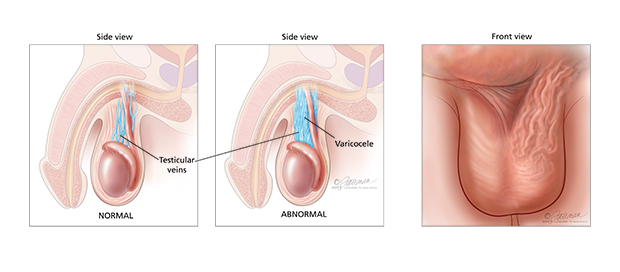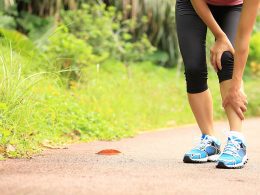Introduction
For many men, hitting the gym is more than a routine—it’s a lifestyle. Lifting weights, pushing limits, and building strength are often associated with good health. But what if your fitness routine is silently affecting your reproductive system? Strange discomfort, testicular heaviness, or even reduced fertility might be more than random issues. In some cases, they point toward a condition called varicocele testicular, which can quietly develop and worsen with time if ignored.
While working out doesn’t directly cause this condition, certain physical stressors can trigger symptoms or intensify existing vein damage. If you’ve ever wondered why there’s occasional scrotal pain after lifting, you’re not alone—and it’s time we addressed it.
What is Varicocele?
A varicocele occurs when the veins inside the scrotum become enlarged and twisted, much like varicose veins in the legs. These veins, known as the pampiniform plexus, help regulate the temperature of the testicles. When they malfunction, blood pools instead of flowing properly, leading to swelling and discomfort.
Varicoceles are more common than most men think—affecting about 15% of the male population—and are the leading correctable cause of male infertility.
How Does Varicocele Develop?
The primary cause of a varicocele is the malfunction of one-way valves in the veins that drain blood from the testicles. When these valves fail, blood flows backward, increasing pressure and causing veins to enlarge.
While the exact reason these valves fail is unclear, contributing factors may include:
-
Genetics
-
Long periods of standing
-
Excessive abdominal pressure
-
Repeated heavy lifting
-
Poor vein structure
Interestingly, varicoceles most commonly occur on the left side due to anatomical differences in how the veins drain.
Recognizing the Symptoms
In many cases, men live with a varicocele for years without even realizing it. When symptoms do show up, they often include:
-
Dull, aching pain in the scrotum
-
A feeling of heaviness or fullness
-
Visible, enlarged veins in the scrotum (like a “bag of worms”)
-
Uneven testicle size
-
Increased discomfort after standing or exercising
-
Fertility issues (such as low sperm count or motility)
The discomfort tends to get worse throughout the day and may improve when lying down.
Can Gym Workouts Make Varicocele Worse?
The short answer is: Yes, in some cases.
While exercise is beneficial for overall health, certain workouts can exacerbate existing varicoceles or trigger symptoms due to increased intra-abdominal pressure. Activities like heavy squats, deadlifts, or straining during core training can restrict blood flow and force more pressure into already weakened veins.
This doesn’t mean you need to give up the gym. It means being smarter about how you train.
Exercise Do’s and Don’ts for Varicocele Management
If you’re managing or suspecting varicocele, here are some practical fitness tips:
✅ Do:
-
Focus on moderate lifting
-
Use proper breathing techniques (exhale during effort)
-
Include light cardio to improve circulation
-
Wear supportive underwear during workouts
-
Rest and stretch properly after training
❌ Don’t:
-
Lift extremely heavy weights with poor form
-
Hold your breath while lifting (Valsalva maneuver)
-
Ignore consistent groin or scrotal pain
-
Train intensely without recovery periods
The goal is to stay fit while also respecting your body’s warning signs.
Anchor Keyword Section
If you’re unsure whether your symptoms are linked to a varicocele or want to understand treatment options, explore our in-depth guide:
Varicocele Testicular Explained: Signs, Risks, and How to Treat It
This article covers everything from diagnosis and treatment to myths, risks, and lifestyle tips.
How Is Varicocele Diagnosed?
If you’re experiencing consistent discomfort or are concerned about fertility, it’s best to get evaluated by a urologist. Here’s what the diagnostic process looks like:
-
Physical Exam: Usually done while standing and bearing down (like during a cough).
-
Scrotal Ultrasound: A painless imaging test that shows vein size and blood flow.
-
Semen Analysis: Checks sperm count, motility, and morphology.
-
Hormone Tests: Optional, to check testosterone levels and other reproductive hormones.
A proper diagnosis helps determine whether the varicocele is mild, moderate, or severe—and whether treatment is needed.
Who Needs Treatment?
Not all varicoceles require surgery or intervention. Some men live with it comfortably. However, you might consider treatment if:
-
The pain affects daily life
-
Testicular size becomes noticeably uneven
-
Fertility is impacted
-
Symptoms worsen despite lifestyle adjustments
Treatment Options: What Are They?
1. Conservative Management
-
Wearing scrotal support (like briefs or athletic wear)
-
Using cold packs post-exercise
-
Anti-inflammatory medications (under medical guidance)
-
Avoiding activities that worsen symptoms
This is usually enough for mild cases.
2. Surgical Treatments
-
Microsurgical Varicocelectomy: The most effective option with the lowest recurrence rate.
-
Laparoscopic Surgery: A less invasive surgical approach.
-
Percutaneous Embolization: A non-surgical technique where a coil blocks off faulty veins using a catheter.
Each option has its pros and cons—recovery time, effectiveness, cost—so your urologist will recommend what suits your specific case.
What Happens If Varicocele Is Left Untreated?
Leaving a moderate-to-severe varicocele untreated can lead to:
-
Persistent or worsening pain
-
Testicular shrinkage (atrophy)
-
Reduced sperm quality
-
Lower testosterone production over time
For men planning to start a family, untreated varicocele may significantly delay or prevent conception.
Can Varicocele Be Prevented?
There’s no guaranteed way to prevent varicocele, especially if it’s genetically linked. But you can minimize risks and manage symptoms by:
-
Avoiding chronic straining or constipation
-
Maintaining a healthy weight
-
Keeping workouts balanced and technique-focused
-
Staying hydrated
-
Managing stress and inflammation through diet
Regular check-ups also help in catching it early before complications arise.
Living with Varicocele: What You Need to Know
Varicocele isn’t life-threatening—but it’s also not something to ignore. Awareness and proactive management can make a huge difference in your comfort, health, and fertility.
Whether you’re active in the gym, planning to start a family, or just value your reproductive health, understanding your body is key. Small steps like adjusting your workout or wearing better support can go a long way.
And if treatment is needed, know that modern techniques offer high success rates with minimal downtime.
Conclusion
Testicular pain, swelling, or fertility challenges shouldn’t be brushed aside—especially if you’re living an active lifestyle. While the gym doesn’t cause varicocele, it can certainly aggravate it. That doesn’t mean you have to stop working out. It means listening to your body, making smart adjustments, and seeking help when something feels off.
Early diagnosis and simple treatments can restore both comfort and confidence. For a deeper understanding of your options, don’t miss this complete guide:












